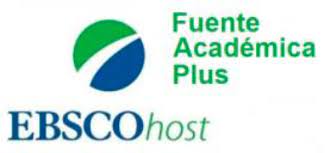El desarrollo del concepto de familiaridad de marca y su comprensión actual como variable moderadora
DOI:
https://doi.org/10.31921/doxacom.n12a7Palabras clave:
Familiaridad de marca, procesamiento de información, comportamiento del consumidorResumen
El artículo expone el tránsito que ha seguido el concepto de familiaridad de marca desde que fue abordado en la década del setenta, su definición técnica en el campo de las comunicaciones de marketing y los estudios del consumidor, hasta su comprensión y uso actual. Para ello, se ha revisado la literatura publicada en las revistas académicas entre 1970 y el 2010. El estudio observa que, en los últimos decenios, la investigación ha abordado el término desde una perspectiva de procesamiento de la información, particularmente en el efecto moderador de la familiaridad de marca en distintos esfuerzos cognitivos y perceptuales.
Descargas
Citas
Alba, J. W. y Hutchinson J. W. (1987): “Dimensions of consumer expertise”, Journal of Consumer Research, vol. 13, n. 4, pp. 411-545.
Ambler, T., Braeutigam, S., Stins, J., Rose, S., Swithenby, S. (2004): “Salience and choice: neural correlates of shopping decisions”, Psychology and Marketing, 21(4), 247-261.
Aurier, P., Jean. S. y Zaichowsky, J.L. (2000): “Consideration set size and familiarity with usage context”, Advances in Con- sumer Research, 27, 307-313.
Baker, W., Hutchinson, W. J. Moore, D., Nedungadi, P. (1986): “Brand familiarity and advertising: effects on the evoked set and brand preference”, Advances in Consumer Research, vol. 13, Issue 1, pp. 637-643.
Baron, R. M. y Kenny, D. A. (1986): “The moderator–mediator variable distinction in social psychological research: Con- ceptual, strategic, and statistical considerations”, Journal of Personality and Social Psychology, vol. 51(6), pp. 1173-1182.
Bettman, J.R. y Park C.W. (1980): “Effects of prior knowledge and experience and phrase of the choice process on consu- mer decision processes: a protocol analysis”, Journal of Consumer Research, vol. 17, December, pp. 234-248.
Biswas, A. (1992): “The moderating role of brand familiarity in reference price perceptions”, Journal of Business Research, vol. 25, Issue 3, pp. 251-262.
Bogart, L. y Lehmam, C. (1973): “What makes a brand name familiar”, Journal of Marketing Research, vol. 10, February, pp. 17-22.
Campbell, M. C. y Keller, K. (2003): “Brand familiarity and advertising repetition effects”, Journal of Consumer Research, vol. 30, Issue 2, pp. 292-304.
Coates, S., Butler, L. T., Berry, D. C., (2006): “Implicit memory and consumer choice: the mediating role of brand familiarity”, Applied Cognitive Psychology, vol. 20, pp.1101-1116.
Conover, J. N., (1982): “Familiarity and the structure of product knowledge”, Advances in Consumer Research, vol. 9, pp. 494-498.
Cox, D. S., Cox, A. D. (1988): “What does familiarity breed? Complexity as a doderator of repetition effects in advertising evaluation”, Journal of Consumer Research, vol. 15, June, pp. 111-116.
Dahlén, M. y Lange, F. (2004): “To challenge or not to challenge: Ad-Brand incongruency and brand familiarity”, Journal of Marketing Theory and Practice, vol. 12, No. 3, pp. 20-35.
Dimofte, C. and Yalch, R. (2008): “The role of product category familiarity in self-referent advertising”, Advances in Consu- mer Research, vol. 35, pp. 726-727.
Du Plessis, E. (1998): “Memory and likeability: Keys to understanding and effects”, Admap, July/August, pp. 42-46.
Gill, J. D., Grossbart, S., Laczniak, R. N. (1988): “Influence of involvement, commitment and familiarity on brand beliefs and attitudes of viewers exposed to alternative ad claim strategies”, Journal of Advertising, vol. 17, No. 1, pp. 33-43.
Ha, Hong-Youl, (2005): “Effects of consumer perceptions of brand experience on the web: Brand familiarity, satisfaction and brand trust”, Journal of Consumer Behavior, vol. 4, pp. 438-452.
Hardesty, D.M. Carlson, J.P. y Bearden, W. O. (2002): “Brand familiarity and invoice price effects on consumer evaluations: the moderating role of skepticism toward advertising”, Journal of Advertising, vol. 31, No. 2, pp. 1-15.
Harrison, A.A. (1977): Mere exposure. En L. Berkowitz (Ed.). Advances in Experimental Social Psychology, Vol. 10, New York. King’s Crown.
Hauser, J. R., Toubia, O., Evgeniou, T., Bufurt, R., Dzyabura, D. (2010): “Disjunctions of conjunctions, cognitive simplicity, and consiedarions sets”, Journal of Marketing Research, vol. XLVII, June, pp. 485-496
Hawkins, S. A. y Hoch, S. J. (1992): “Low-Involvement learning: memory without evaluation”, Journal of Consumer Research, December, vol. 19, pp. 221-225.
Hawkins, S. A. Hoch, S. J. y Meyers-Levy. J. (2001): “Low involvement learning: repetition and coherence in familiarity and belief”, Journal of Consumer Psychology, vol. 11, Issue, 1, pp. 1-11.
Howard, J.A., Sheth, J.N. (1969): The Theory of Buying Behaviour. N.Y.: John Wiley & Sons Inc.
Jacoby, L.L. (1991): “A process dissociation framework: Separationg automatic from intentional uses of memory”, Journal of Memory and Language, vol. 30, pp. 513-541.
Johnson, E. J. y Russo, E. J., (1984): “Product familiarity and learning new information”, Journal of Consumer Research, June, vol. 11, pp. 542-550.
Kahneman, D., Knetsch, J. L.. Thaler, R. H. (1991): “Anomalies: The Endowment Effect, Loss Aversion, and Status Quo Bias”, Journal of Economic Perspectives, vol. 5, No. 1, pp. 193-206.
Kent, R, J., y Kellaris, J. J. (2001): “Competitive interference effects in memory for advertising: are familiar brands exempt?”, Journal of Marketing Communications, vol. 7, No. 3, pp. 159-169.
Kent, R. J. y Allen, C. T. (1994): “Competitive interference effects in consumer memory for advertising the role of brand familiarity”, Journal of Marketing, July, vol. 58, pp. 97-105.
Krugman, H. E. (1965): “The impact of television adversiting: Learming without involvement”, Public Opinion Quarterly, vol. 29, pp. 439-356.
Krugman, H. E. (2000): “Memory without recall, exposure without perception”, Journal of Advertising Research, vol. 17, pp. 7-12.
Lange, F. y Dahlen, M. (2003): “Let’s be strange: brand familiarity and ad-brand incongruency”, Journal of Product and Brand Management, vol. 21, Issue 7, pp. 449-461.
Laroche, M., Kim, Ch., Zhou, L. (1996): “Brand familiarity and confidence as determinants of purchase intention: an em- pirical test in multiple brand context”, Journal of Business Research, vol. 37, Issue 2, pp. 115-120.
Lee, D. y Ganesh, G. (1999): “Effects of partitioned country image in the contex of brand image and familiarity. A categori- zation theory perspective”, International Marketing Review, vol. 16, No. 1, pp. 1-4.
Machleit, K. A. y Wilson, D. A. (1988): “Emotional feelings and attitude toward the advertisement: the roles of brand familiarity and repetition”, Journal of Advertising, vol. 17, No. 3, pp. 27-35.
Marks, L. J. y Olson, J. C. (1981): “Toward a cognitive structure conceptulization of product familiarity”, Advances in Consumer Research, vol. 8, Issue 1, pp. 145-150.
Monroe, K. B. (1976): “The influence of price differences and brand familiarity on brand preferences”, Journal of Consumer Research, vol. 3, No. 1, pp. 42-49.
Moothy, S., y Zhao, H. (2000): “Advertising spending and percieved quality”, Marketing Letters, vol. 11:3, pp. 221-233. Park, C. W. y Lessig V. P. (1981): “Familiarity and its impact on consumer decision biases and heuritics”, Journal of Consumer Research, vol. 8, pp. 223-230.
Park, C. W. y Lessing, V. P. (1977): “Judgmental rules and stage of the familiarity curve: promotional implications”, Journal of Advertising, vol. 6, Issue 1, pp. 10-16.
Phelps, J. y Thorson, E. (1991): “Brand familiarity and product involvement effects on the attitude toward an ad brand attitude relationship”, Advances in Consumer Research, vol. 18, pp. 202-209.
Politz, A. (1975): “The function of advertising and its measurements”, Journal of Advertising, vol. 4, Issue 2, pp. 10-12.
Rindfleisch, A., Inman, J. J. (1988): “Explaining the familiarity-Liking relationship: mere exposure, information availability, or social desirability?”, Marketing Letters, vol. 9, No. 1, pp. 5-19.
Simonin, B. L., Ruth, J. A. (1998): “Is a company known by the company it keeps? Assessing the spillover effects of brand alliances on consumer brand attitudes”, Journal of Marketing Research, February, vol. XXXV, pp. 30-42.
Sun, Ya-Chung, Lin, Chien-Huang, Cheng, Yin-Hui y Chuang, Shih-Chieh (2009): “The moderating effect of product familiarity on the endowment effect”, Advances in Consumer Research, vol. 36, pp. 974-975.
Sundaram, D.S. Mitra, K. y Webster, C. (1998): “Word of mouth comunications: a motivational analysis”, Advances in Consumer Research, vol. 25, pp. 527-531.
Tellis, G. J. (1997): “Effective frequency: one exposure or three factors?”, Journal of Advertising Research, vol. 37, Issue 4, pp. 7-12.
Vanhuele, M. (1995): “Why familiar stimuli are better liked. A study on the cognitive dynamics linking recognition and mere exposure effect”, Advances in Consumer Research, vol. 22, pp. 171-175.
Vargas, Lizardo (2003): “Procesamiento de infomación y familiaridad de marca”, Análisi Cuaderns de Comunicació i Cul- tura, vol. 30, pp. 225-240.
Vaydyanathan, R. (2000): “The Role of Brand Familiarity in Internal Reference Price Formation: an Accessibility-Diagnos- ticity Perspective”, Journal of Business and Psychology, vol. 14, No. 4, pp. 605-624.
Zaichowsky, L. L. (1985): “Familiarity: product use, involvement or expertise”, Advances in Consumer Research, vol. 12, pp. 296-299.
Zajonc, R. B., (1968): “Attitudinal effects of mere exposure”, Journal of Personality and Social Psychology. Monograph Sup- plement, vol. 9, No., 2 part 2, pp.1-27.
Descargas
Publicado
Cómo citar
Número
Sección
Licencia
Derechos de autor 2011 http://creativecommons.org/licenses/by-nc/4.0

Esta obra está bajo una licencia internacional Creative Commons Atribución-NoComercial 4.0.



























